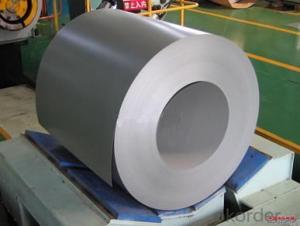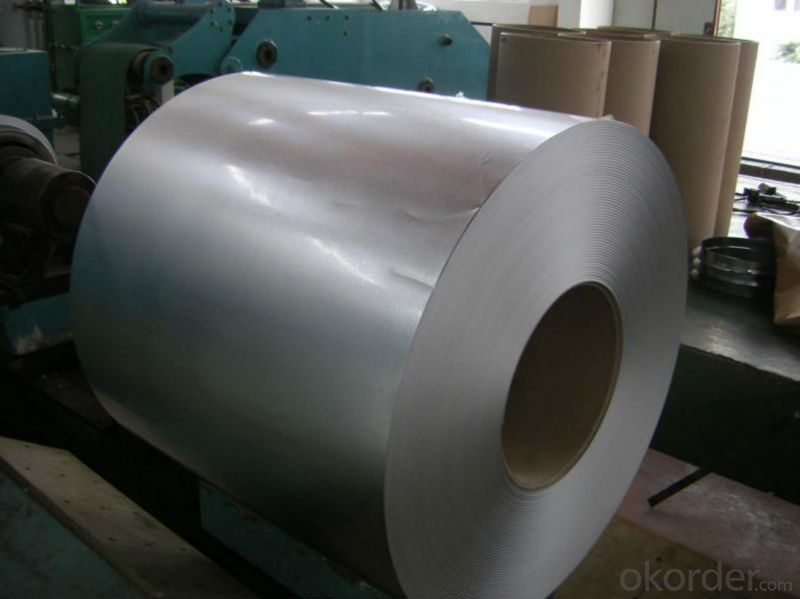Gavalume steel coil
- Loading Port:
- China Main Port
- Payment Terms:
- TT OR LC
- Min Order Qty:
- -
- Supply Capability:
- -
OKorder Service Pledge
Quality Product, Order Online Tracking, Timely Delivery
OKorder Financial Service
Credit Rating, Credit Services, Credit Purchasing
You Might Also Like
Packaging & Delivery
| Packaging Detail: | Standard export and seaworthy packing. (waterproof paper and metal sheet protection with fluted rings at inner and outer edges, 4 eye bands and 4 circumferential bands fasten the coil) |
| Delivery Detail: | In 25 days after we got the advance payment or the formal LC |
Specifications
GL Steel Coil
Thickness: 0.16-0.80mm;
Coils width: 700-1250mm
Coils weight: 3.0-8.0MT
- Q:What are the different methods of coil slitting for precision cuts?
- Coil slitting, a process utilized for cutting large coils of material into narrower strips, is achieved through various methods that offer distinct advantages and suitability for different applications. 1. Rotary Shear Slitting, the most commonly used method, employs rotating circular knives to shear the material and create multiple strips. The distance between the blades can be adjusted to achieve the desired width. This method guarantees high precision with smooth and burr-free edges. 2. Drag Knife Slitting involves the use of a knife with a drag or tangential orientation that follows the material's contour and produces accurate cuts. It is ideal for materials with irregular shapes and finds application in the textile industry to cut fabrics. 3. Scissor Slitting utilizes two blades that move in a scissor-like motion to cut the coil. This method is commonly employed for thinner materials, providing excellent control and precision. It is ideal for materials prone to deformation or wrinkling. 4. Razor Slitting involves the use of a single or multiple razor blades positioned perpendicular to the material. It is particularly effective for cutting stretchy or delicate materials, minimizing the risk of tearing or deforming. 5. Crush Cutting applies pressure from a hardened steel roller or an anvil against a softer material, causing it to deform and split along the desired cutting line. It is suitable for materials that are challenging to cut with sharp blades, delivering precise and clean cuts. In conclusion, the choice of coil slitting method depends on the material, desired precision, and specific application requirements. Each method offers unique benefits and can be tailored to meet specific cutting needs, ensuring accurate and efficient coil slitting processes.
- Q:What is the standard diameter of steel coils?
- Depending on the industry and application, the standard diameter of steel coils may differ. Generally, steel coils have a standard diameter that falls between 24 inches and 72 inches. This range enables convenient handling, transportation, and storage of the coils. It is worth mentioning that various industries may impose specific requirements for steel coil diameters, taking into account factors like equipment compatibility, production processes, and logistical considerations.
- Q:How are steel coils used in the production of steel clamps?
- Steel coils are used in the production of steel clamps as the primary raw material. The coils are fed into a machine that cuts, shapes, and bends them to create the desired clamp design. The strength and durability of the steel coils ensure that the resulting clamps are capable of securely holding objects together.
- Q:On a fixie frame what should i get an aluminum frame or a steel frame
- Aluminum Fixie
- Q:What is the process for uncoiling and recoiling steel coils?
- The process for uncoiling and recoiling steel coils involves several steps to ensure the safe and efficient handling of the coils. 1. Unloading: The steel coils are typically transported to the desired location using cranes or forklifts. They are carefully unloaded from the transportation vehicle and placed in a designated area. 2. Inspection: Before uncoiling, it is crucial to inspect the steel coils for any damage or defects. This step ensures that only quality coils are processed further. 3. Securing: Once inspected, the steel coils are secured to prevent any movement during the uncoiling process. This is done by using clamps or straps to hold the coils firmly in place. 4. Uncoiling: Uncoiling involves the gradual unwinding of the steel coil. This can be done manually or using specialized machinery such as uncoilers or decoilers. The coil is typically fed through a series of rollers that help guide the unwinding process. 5. Straightening: In some cases, the steel coil may need to be straightened before further processing. This can be done using straightening machines that apply pressure to remove any bends or twists in the steel. 6. Cutting: If required, the uncoiled steel coil may be cut into smaller sections or sheets. This can be done using shearing machines or other cutting tools. The dimensions and size of the cuts depend on the specific requirements of the project. 7. Recoiling: Once the desired processing steps are completed, the steel coil can be recoiled. This involves rewinding the steel into a new coil shape. Recoiling can be done manually or using recoilers, which wind the steel evenly and tightly to maintain its integrity. 8. Packaging and storage: After recoiling, the steel coils are typically packaged and stored for further transportation or use. They may be wrapped in protective materials such as plastic or metal sheets to prevent corrosion or damage. Overall, the process for uncoiling and recoiling steel coils requires careful handling, inspection, and the use of specialized machinery. By following these steps, steel coils can be efficiently processed and prepared for various applications in industries such as construction, automotive, and manufacturing.
- Q:and what are the four main elements in STAINLESS steel? x
- decreasing the carbon content fabric will strengthen the ductility, which will make it greater versatile. Carbon in metallic varieties brittle cementite (iron carbide) which will strengthen the hardness and capability of metallic.
- Q:What are the dimensions of steel coils used in automotive accessory manufacturing?
- The dimensions of steel coils used in automotive accessory manufacturing can vary depending on the specific application and requirements. However, typical dimensions for steel coils used in this industry range from 0.3 mm to 4.0 mm in thickness and from 600 mm to 2000 mm in width. The length of the coil can also vary, but it is commonly around 2000 meters.
- Q:Can steel coils be coated with weather-resistant materials?
- Yes, steel coils can be coated with weather-resistant materials such as zinc, aluminum, or organic coatings to enhance their resistance to corrosion and exposure to harsh weather conditions.
- Q:What are the different types of steel coil storage methods?
- There are several different types of steel coil storage methods, including vertical stacking, horizontal stacking, coil cradles, and coil racks.
- Q:What is the role of steel coils in the manufacturing of appliances?
- Steel coils are used in the manufacturing of appliances to provide strength, durability, and structural integrity to the appliance components. They serve as the foundation for various parts, such as the body, frame, and internal structures, ensuring stability and support. Steel coils also contribute to the overall performance and lifespan of appliances by withstanding high temperatures, corrosion, and mechanical stress.
1. Manufacturer Overview |
|
|---|---|
| Location | |
| Year Established | |
| Annual Output Value | |
| Main Markets | |
| Company Certifications | |
2. Manufacturer Certificates |
|
|---|---|
| a) Certification Name | |
| Range | |
| Reference | |
| Validity Period | |
3. Manufacturer Capability |
|
|---|---|
| a)Trade Capacity | |
| Nearest Port | |
| Export Percentage | |
| No.of Employees in Trade Department | |
| Language Spoken: | |
| b)Factory Information | |
| Factory Size: | |
| No. of Production Lines | |
| Contract Manufacturing | |
| Product Price Range | |
Send your message to us
Gavalume steel coil
- Loading Port:
- China Main Port
- Payment Terms:
- TT OR LC
- Min Order Qty:
- -
- Supply Capability:
- -
OKorder Service Pledge
Quality Product, Order Online Tracking, Timely Delivery
OKorder Financial Service
Credit Rating, Credit Services, Credit Purchasing
Similar products
New products
Hot products
Related keywords






























